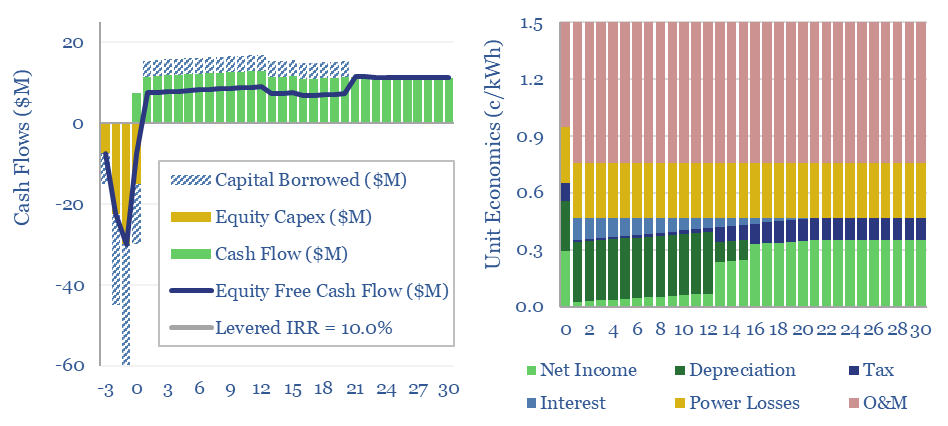This data-file captures the costs of AC power transmission, requiring a 1.5c/kWh spread to earn a 10% levered IRR on a new 100km and 1,000MW transmission line, with capex costs of $1.5/kW-km. These numbers are supported by backup tabs, tabulating the costs of recent projects and a granular breakdown for the capex costs across 15 lines.
The capex costs of AC power transmission lines depend on both the capacity and length of the line, hence neither metric alone is particularly stable, when we tabulate the cost of past projects (chart below). Lengths range from 50-1,000km and power ratings range from 300-3,000MW. A better metric is the cost per kW of capacity and per km of distance, which we abbreviate as $/kW-km, averaging $1.5/kW-km.
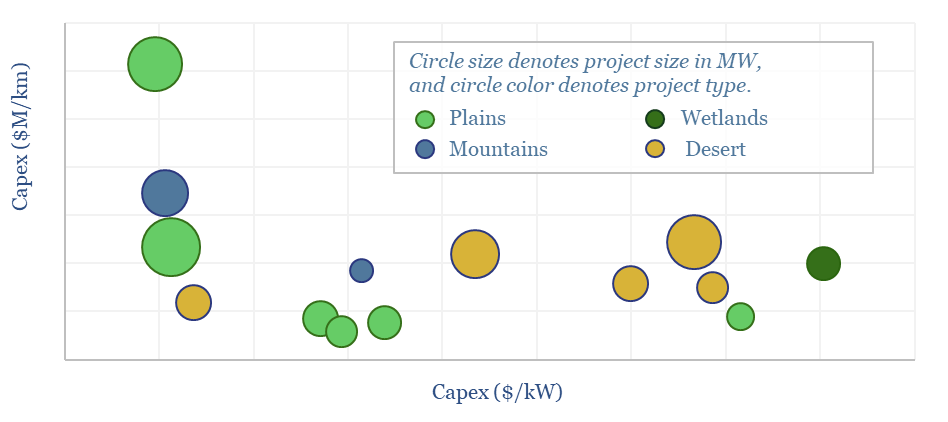
The capex costs of AC power transmission lines can also be built up from first principles, as a breakdown of this $1.5/kW-km cost, across fifteen separate categories. The largest cost lines are installation (c25%), the metal structures (c20%), their foundations (c10%), the conductors (c10%), land preparation (c10%), substations (7%) and smaller contributors. Our source for these estimates are excellent granular disclosures from PJM.
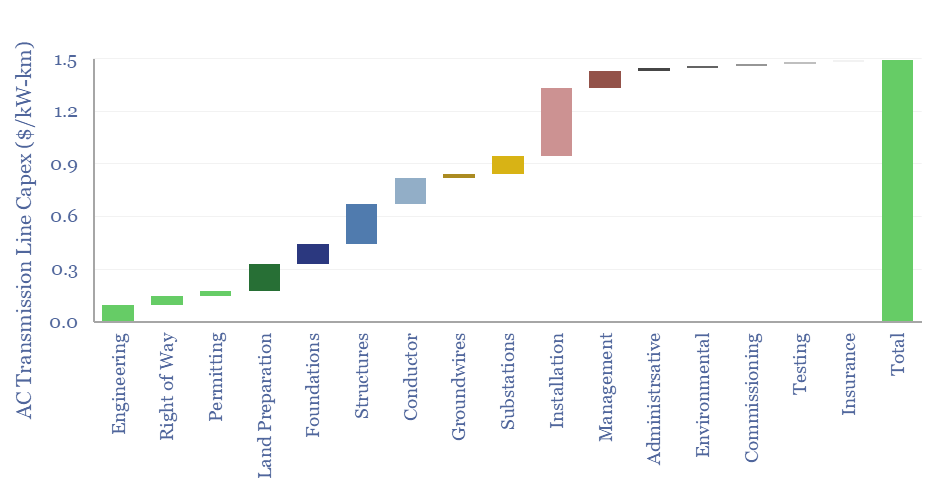
As general rules of thumb, a higher voltage line requires larger and more expensive towers (first chart below), while a higher current line requires larger and more expensive conductors (second chart below). Nevertheless, all else equal, higher voltage and higher current lines will increase the power rating of a cable, and lower its total costs.
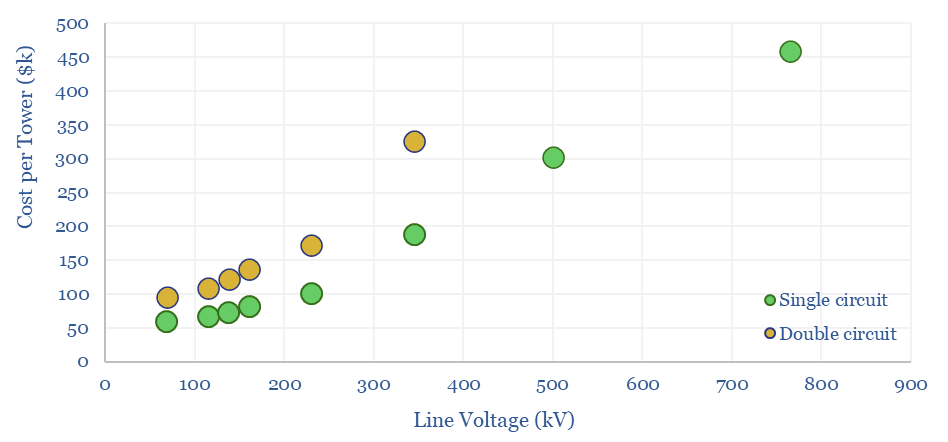
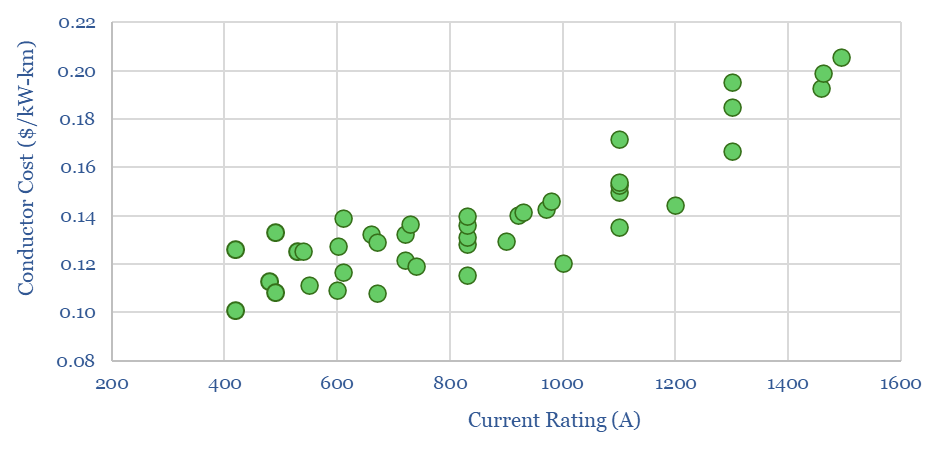
However our base case is relatively generous and can easily come in at $2-3/kW-km. Please download the data-file for sensitivies around land acquisition, permitting, site preparation, line length, line power, circuits per line, et al. While trenched lines are more resilient, they can also be 5-20x more expensive, according to some studies.
The key challenge, however, is not cost, but timing, as the average project in our screen takes 8-years to plan/permit, then 3-years to construct. It may take a long time to resolve power grid bottlenecks.
Other cost lines are taken from the disclosures of regulated utilities, conductor costs, and other data-files we have constructed into high-voltage transmission lines. We have also separately modeled the costs of HVDCs, for longer-distance transmission. For more details, please see our overview of power transmission.

